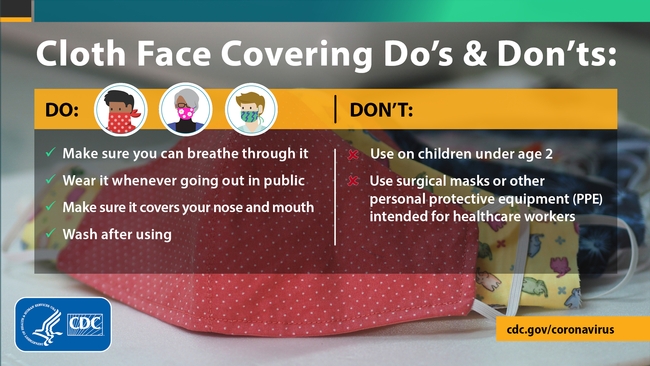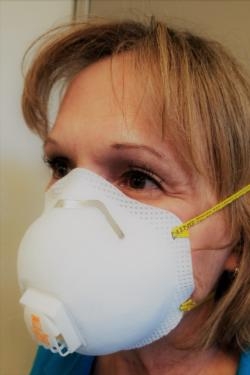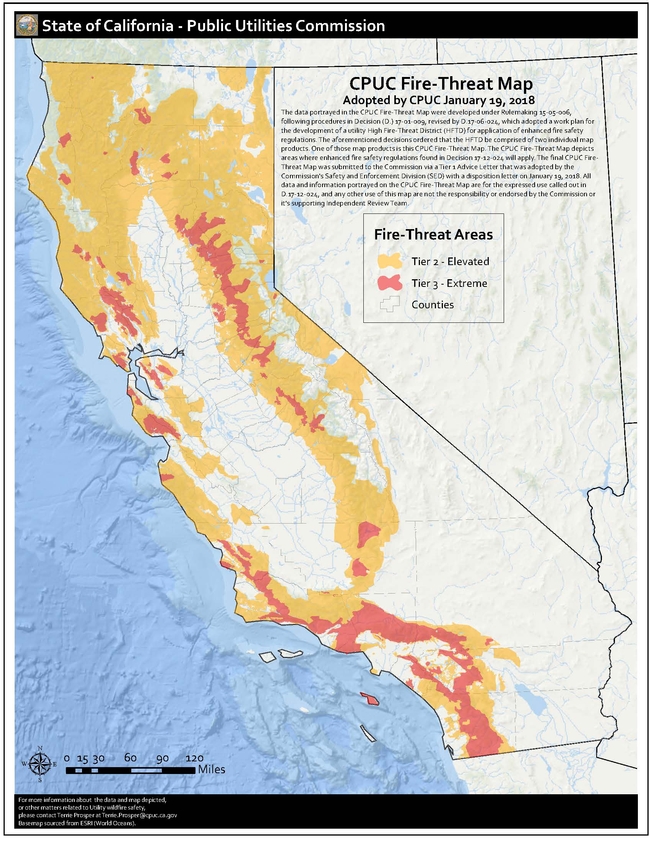Posts Tagged: Risk
Safety standards set for resuming in-person activities
Some county health authorities have begun to modify local shelter-at-home orders for COVID-19 and relax restrictions on low-risk activities. To ensure that we continue to protect the health and safety of our people and our communities, UC ANR has developed UC ANR Safety Standards for Resuming In-Person Activity, Stage 2 to outline protocols for our programs and work locations.
The safety standards are informed by state, county and UC best practices, and are intended to help UC Cooperative Extension directors, Research and Extension Center directors and statewide program leaders plan for the eventual resumption of some in-person activities.
For those counties that have authorized return to in-person activity under Stage 2, UC ANR directors are now required to document their plans for in-person work activity with the ANR Emergency Response team based on the safety standards. Local plans may vary from county to county, and may change over time to be more or less restrictive as the impact of reopening unfolds.
It is important to remember that the state is allowing for the resumption of limited onsite operations. UC ANR employees and volunteers who can still work or engage remotely should continue to do so until Governor Newsom completely lifts California's stay-at-home order and UC ANR advises it is appropriate to return to in-person operations.
ANR directors contributed to the development of ANR's safety standards, and we've asked them to help address questions and concerns and to reinforce the steps being taken to provide a safe working environment.
“Throughout this process, the safety and health of ANR's employees, volunteers and clientele are the top priority as we resume in-person activities,” said Brian Oatman, director of Risk & Safety Services.
In general, ANR will be taking a slow and deliberate approach to expanding in-person activities, and most of us will continue to work remotely for the immediate future.
Several questions about resuming in-person activities were answered during the ANR town hall meeting on May 28. A recording of that town hall will be posted at https://ucanr.edu/sites/anrstaff/All_Hands.
FAQs have been developed to address questions asked during the May 28 Town Hall meeting concerning safety measures related to COVID-19, budgetary impacts and more. Please visit http://ucanr.edu/sites/safety/files/327731.pdf to read the questions and answers.
For resources related to COVID-19, visit https://ucanr.edu/covid19.
New rules passed to protect workers from wildfire smoke: guidance available
Cal/OSHA recently passed an emergency regulation to establish standards to protect workers from the hazards of wildfire smoke. This standard has four primary requirements:
- Identify potential exposures to harmful air quality caused by wildfire smoke (i.e. monitor Air Quality Index (AQI) forecasts and daily levels during wildfire events).
- Communicate wildfire smoke hazards, air quality conditions, protective measures, and encourage feedback from employees.
- Train employees who are reasonably anticipated to be affected by unhealthy air quality caused by wildfire smoke.
- Control harmful exposure to outdoor workers by various methods as feasible. During unhealthy air quality events, these control measures may include working indoors in a building with filtered air, limiting the duration and intensity of outdoor work, or use of a filtering respirator when other means are not effective or practical to control exposure. The standard requires that when the AQI for PM2.5 reaches 151 or higher, the employer must make respirators available for employees to use if they must work outdoors.
UC ANR Risk & Safety Services has developed guidance and training on how to comply with this new regulation at http://ucanr.edu/protectfromwildfiresmoke as well as a PowerPoint training for safety coordinators to share with employees. Risk & Safety Services is also procuring respirators that will be shipped to all ANR locations.
“Since this is a brand-new regulation, we expect that additional guidance will come out from Cal/OSHA in the next few months,” said Brian Oatman, director of Risk & Safety Services.
In addition to this Cal/OSHA standard, a team from all UC campuses and ANR has been developing a decision matrix for guiding how UC locations will respond to unhealthy air quality due to wildfire smoke. This decision matrix will include various types of activities, such as outdoor workers, volunteers, athletics, camps, and youth activities. We will share this additional information as the decision matrix is finalized.
If you have questions about the new wildfire smoke rules, please contact Brian Oatman at (530) 750-1264 or baoatman@ucanr.edu.
Top 3 things to know about public safety power shutoff
To reduce the likelihood or severity of fire incidents during extreme weather or potential wildfire conditions, California has approved the Public Safety Power Shutoff Program allowing utility companies to turn off power as a preventive measure.
UC ANR Risk & Safety Services has prepared Safety Note #199 PUBLIC SAFETY POWER SHUTOFFS (PSPS) to provide tips and links to additional information.
Here are the three most important things to know about public safety power shutoffs:
1. The decision and action to turn off power is made by each energy company and is based on a combination of factors, including high winds, red flag warnings, low humidity, dry vegetation serving as fuel, fire/wind threat to electric infrastructure, on-the ground observations, and overall risk to public safety. Monitor these conditions in your immediate area and be prepared to act. Visit http://prepareforpowerdown.com to learn more. Additionally, the California Public Utilities Commission has posted maps of areas they have determined to have the greatest fire threat https://www.cpuc.ca.gov/FireThreatMaps/. You can review these maps to better understand the potential fire threat at your location and other locations that you visit for research, extension or other activities.
2. Sign up for alerts! Update your personal and office location contact information with your local energy company. You can do so by contacting the company, visiting their website, or by visiting http://prepareforpowerdown.com. If you are alerted of a possible shutdown, look for more detailed information from your utility company's website or social media accounts to better understand how the shutdown may affect you. A PSPS will usually affect a specific area or neighborhood, not an entire city or county. In some cases, the utility will post maps of the affected area.
3. If your office is closed or affected due to a PSPS or other emergency, directors or office managers should notify ANR Risk & Safety Services by contacting Brian Oatman (baoatman@ucanr.edu). If employees aren't able to work due to a natural disaster or emergency, ANR Human Resources (anrstaffpersonnel@ucanr.edu) should also be notified so that arrangements may be made to track and report employee leave time during the emergency.
AVP Powers announces 51 proposals invited for competitive and high-reward grants
AVP Wendy Powers announced the letters of intent (LOIs) for which principal investigators have been invited to submit full proposals to ANR's Competitive Grants Program and High-Risk/High-Reward Grants Program. The list of 51 approved projects can be found at http://ucanr.edu/sites/anrstaff/files/261626.pdf.
This year ANR received a total of 108 letters of intent — 97 for the Competitive Grants Program and 11 for the High-Risk/High-Reward Grants Program. Strategic Initiative leaders and their respective panels reviewed all letters of intent thoroughly to address the appropriateness of the proposals in addressing the goals and criteria outlined by each funding opportunity.
ANR Competitive Grants Program
The purpose of the ANR competitive grants program is to address high-priority issue areas identified by at least one of the strategic initiatives: Endemic and Invasive Pests and Diseases (EIPD), Healthy Families and Communities (HFC), Sustainable Food Systems (SFS), Sustainable Natural Ecosystems (SNE), and Water Quality, Quantity and Security (Water).
ANR Competitive Grants Program 2017 Cycle:
- Full proposals due June 19
- Technical peer review: mid-June – early September 2017
- Strategic Initiative review and recommendations: end of September 2017
- Program Council review and recommendations: October/November 2017
- Announcement of funded grants: November/December 2017
High-Risk/High-Reward Grants Program
Given the complexity of societal problems, high-risk research is necessary to achieve gains for real progress in addressing present and emerging challenges. This program will provide funds to initiate and complete research and proof-of-concept efforts that serve as the basis for larger funding opportunities. These projects must be of a high-risk/high-reward nature that are best conducted in a controlled, research setting and, if successful, lend themselves to subsequent larger funding opportunities and/or intellectual property development.
Proposed projects must be within the scope of the ANR Strategic Vision. All ANR academics with PI status are eligible to apply. Proposals will be accepted using the same timeline as outlined for the traditional competitive grants program, but reviewed separately due to the nature of the proposal.
For questions about ANR's competitive grants program or high-risk/high-reward grants program, please contact Melanie Caruso at mmcaruso@ucanr.edu.



